It’s actually the corner of Randolph and Wallace, but that’s not very euphonious. 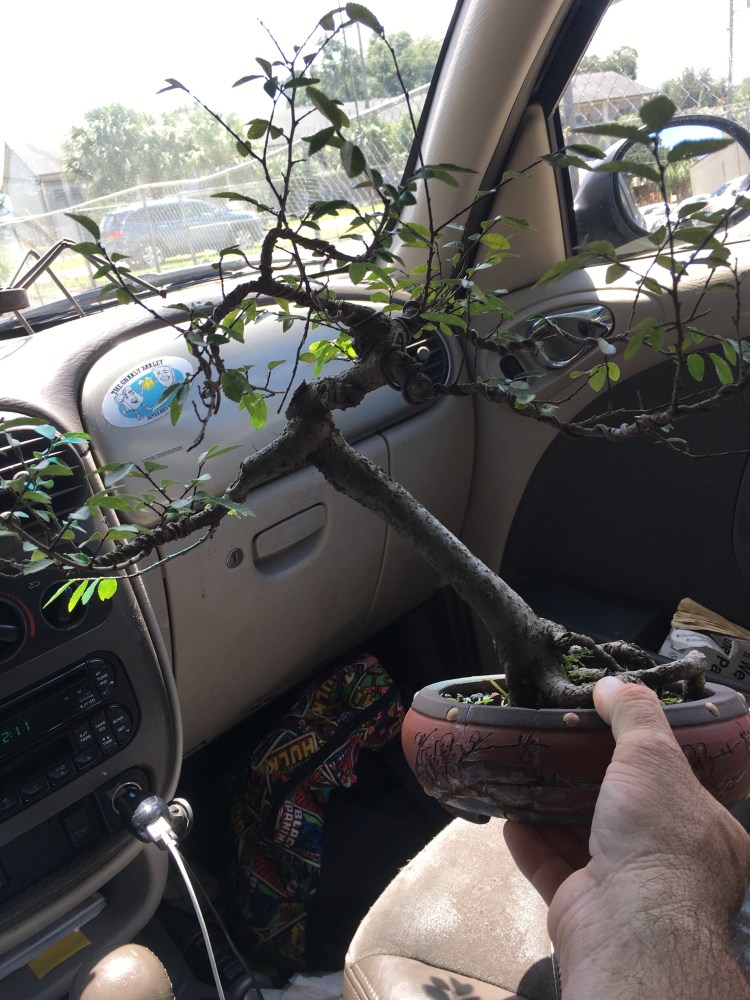
It is an elm tree. A Chinese elm, for clarification, Ulmus parviflora, which means “small flowered elm”. It is a species from East Asia including China and Japan (sorry, but I must insert a note on the general naming of plants, or the binomial system. I see this mistake often, but, most recently and embarrassingly, by a gentleman who has been in bonsai for longer than I’ve been alive. The genus is the first part, which here would be the “Ulmus”. The second part is the species, again, in this case “parviflora”. Lastly, we would have the cultivar, which might be “Caitlyn” or “seiju”. It’s not very edifying to oneself to use the word “cultivar” when you mean “species”)
I’m not sure what, if any, the variety this tree is (or, you know, the cultivar, which means a cultivated variety, or one that’s been selected for favorable traits. Like the small (tiny) leaves on the Ulmus parviflora “seiju”)  It is ugly. Very non-elm like. Looks like a caricature of a bonsai.
It is ugly. Very non-elm like. Looks like a caricature of a bonsai.
And I’ve let it get scarred terribly. 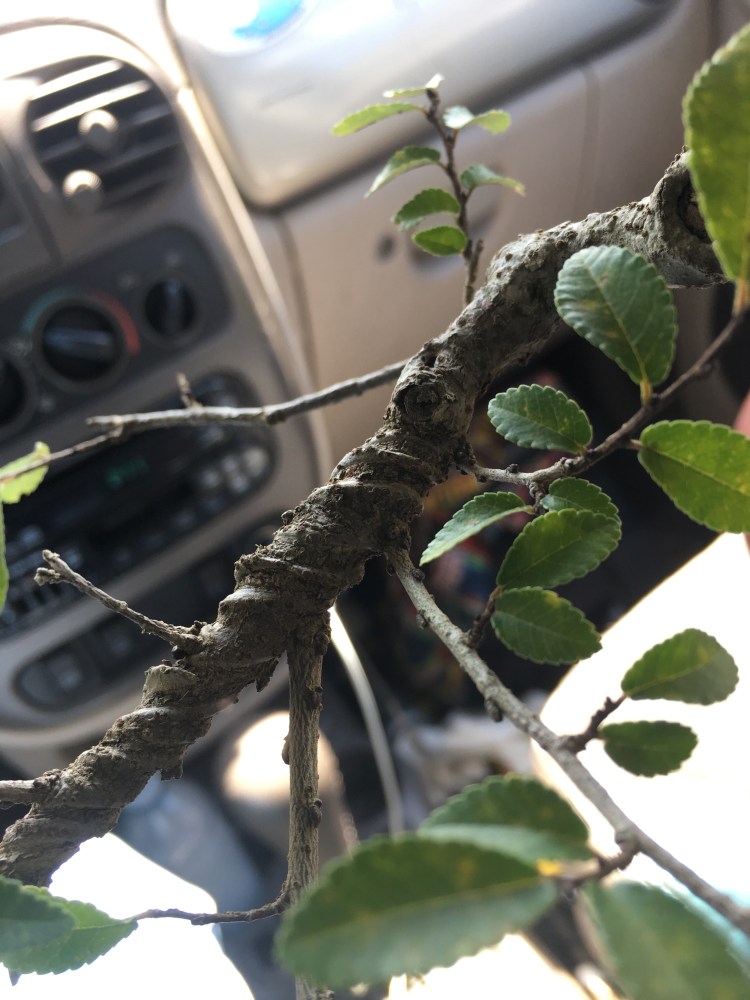 But scars are cool. Chicks dig ’em. That’s ok though, they’ll grow out in the end.
But scars are cool. Chicks dig ’em. That’s ok though, they’ll grow out in the end.
I think I got several of these elms from someone and had to take the good with the bad, hence this one….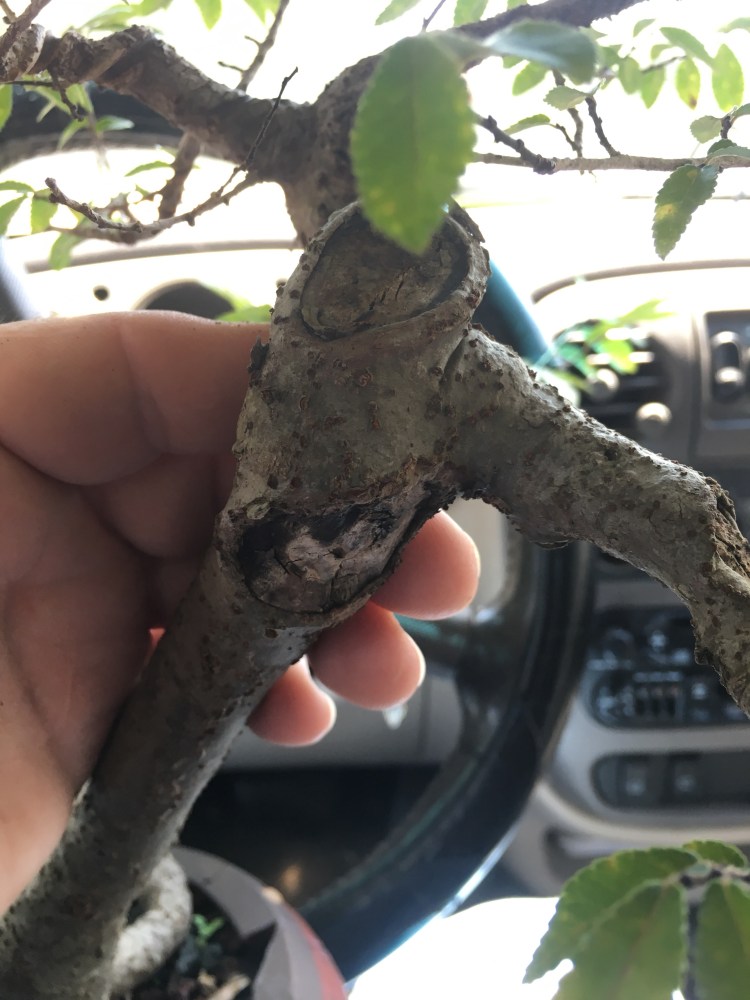 In my experience, in Florida, the Chinese elm is unique in the deciduous world in that it’s not always deciduous. Meaning the leaves stay on the tree and stay green all winter. We can also repot them well into spring, even after new growth has appeared. They do suffer a heat dormancy in July/August, but if you keep them fertilized, watered, and pruned, they will keep growing.
In my experience, in Florida, the Chinese elm is unique in the deciduous world in that it’s not always deciduous. Meaning the leaves stay on the tree and stay green all winter. We can also repot them well into spring, even after new growth has appeared. They do suffer a heat dormancy in July/August, but if you keep them fertilized, watered, and pruned, they will keep growing.
These characteristics got me to asking myself, “Self, if these trees exhibit some traits of a tropical, or semi-tropical plant, what would happen if I treated one that way?” Now, normally, I stop even thinking about the deciduous trees after September or so, as far as pruning and fertilizer go, because if I don’t, and get a flush of growth in, say, December, then get a cold snap that freezes off the new growth, a deciduous tree generally doesn’t have the energy to re-sprout again come spring. I don’t even look in their general direction for this reason.
Now, normally, I stop even thinking about the deciduous trees after September or so, as far as pruning and fertilizer go, because if I don’t, and get a flush of growth in, say, December, then get a cold snap that freezes off the new growth, a deciduous tree generally doesn’t have the energy to re-sprout again come spring. I don’t even look in their general direction for this reason.
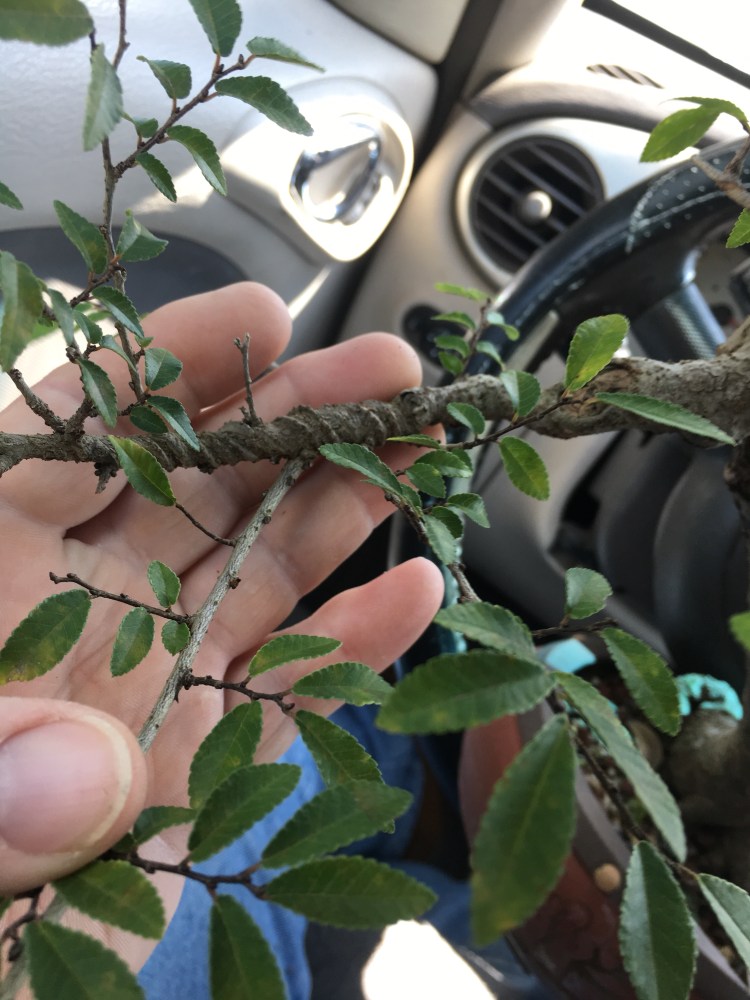 Here’s my timeline and techniques on how I teach the development of deciduous bonsai trees:
Here’s my timeline and techniques on how I teach the development of deciduous bonsai trees:
Starting in late January (the same for all parts of the world, mostly) you knock off any extraneous and un-needed buds that formed last year. Use basic bonsai pruning ideas to choose the wanted/unwanted ones, i.e, any bud in the crotches or undersides of branches. Remove old wire as well.
In February or March (depending on where you live) and as the new (and remaining) buds begin to swell, repot the tree. Do not fertilize at this time. If you fertilize now, it will cause the new growth to have long internodes (the spaces between the buds, or nodes). We want the growth to be short and close, so when you prune, the ramification is more dense.
I also wire at this time so that the shapes are set early in the year.
In about a month, after the new leaf growth hardens off (gets dark green, thickens, stiffens) then you fertilize, and prune off unwanted branches, or shorten extra long ones. Remove any wire that may be starting to get too tight at this time and re-wire as needed.
In June/July, defoliate and un-wire, re-wire. Fertilize again (when I say “fertilize” and it’s a tree in training, I mean using a granular and organic fertilizer. For slow, extended release and slow, strong growth).
At the end of August or early September, remove any old fertilizer, un-wire, and re-wire as needed, then let the tree go dormant for winter.
Some of the timing will be different (think of the differences from Miami to Alberta). But the procedures would be the same.
The reason for such a rigorous schedule is a deciduous tree can only (well, mostly) create food for itself during the growing season and it stores this food (as carbohydrate and sugars) until it needs to wake up in the spring. If we start taking energy to develop it as a bonsai, we can weaken it and even kill it.
It is this reason that I can’t grow a tree like the Japanese maple. It is very sensitive to heat, and it comes out of dormancy in Florida too early, or never goes into dormancy, and the trees just fizzle out and die, consuming it’s food because it has no choice to do so.
So then, what in the name of all that is green and growing, am I doing to this poor elm?
Well, first, I’m pruning for taper …..
Snackt!

Then some defoliation…..
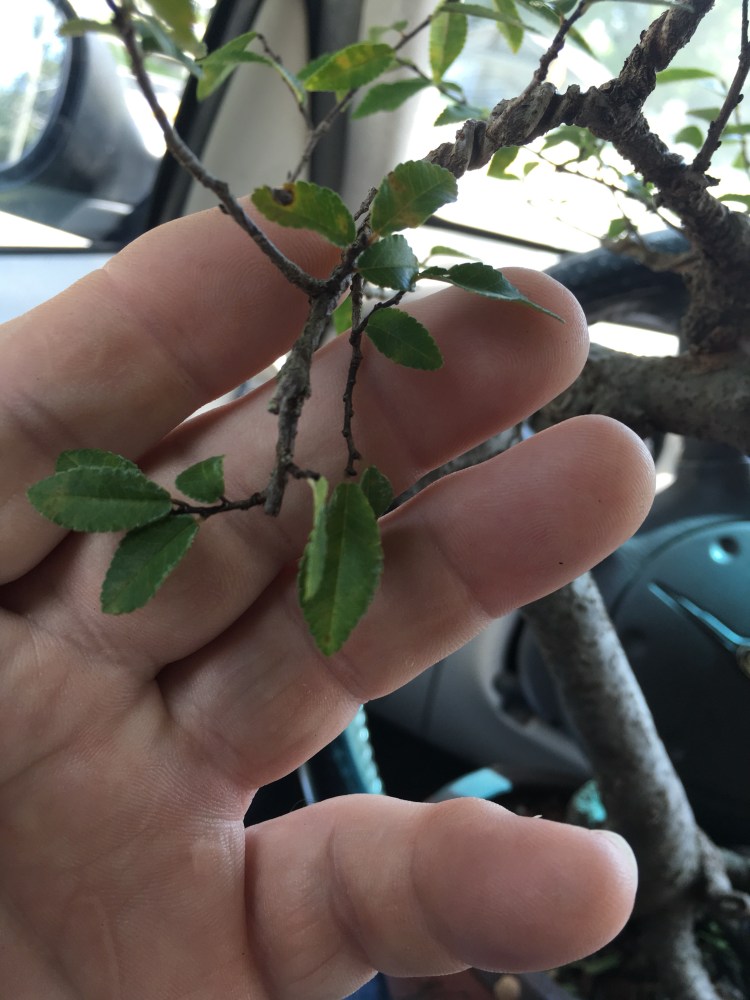
You can tell a leaf in senescence by how easily it plucks off the branch.
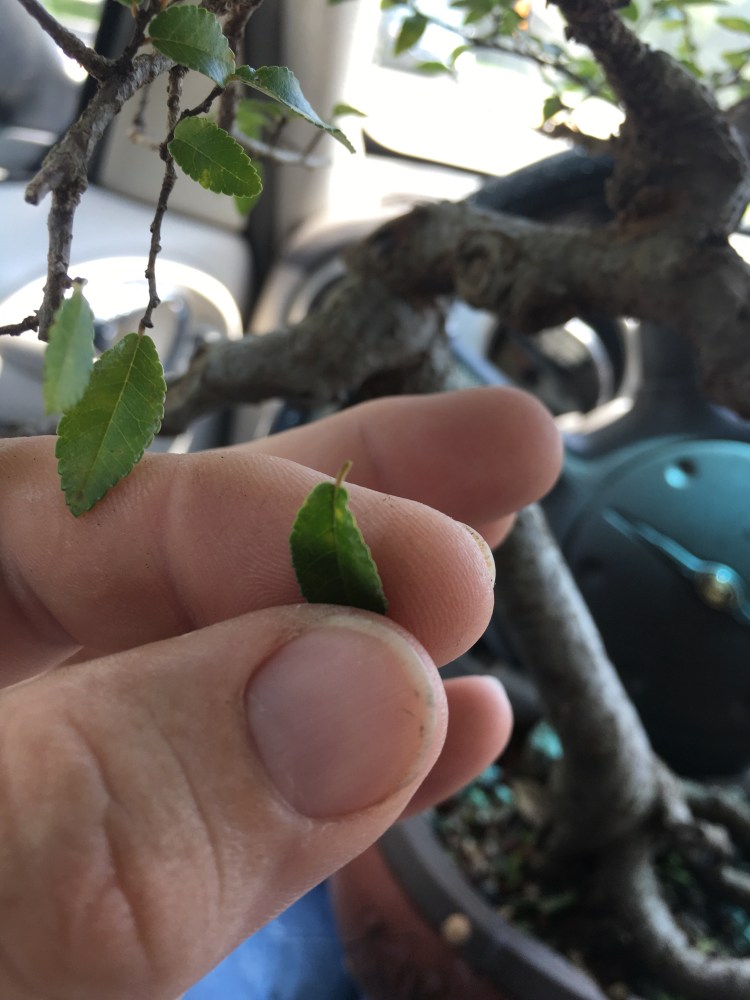 And it is in a senescent state, but not yet dormant. It’s been a long, hot, wet summer here in The Sunshine State, my normal timing would have been to defoliate in July to kick it out of this slowdown. But, if you read the last post, I’m a little behind on some of my trees.
And it is in a senescent state, but not yet dormant. It’s been a long, hot, wet summer here in The Sunshine State, my normal timing would have been to defoliate in July to kick it out of this slowdown. But, if you read the last post, I’m a little behind on some of my trees.
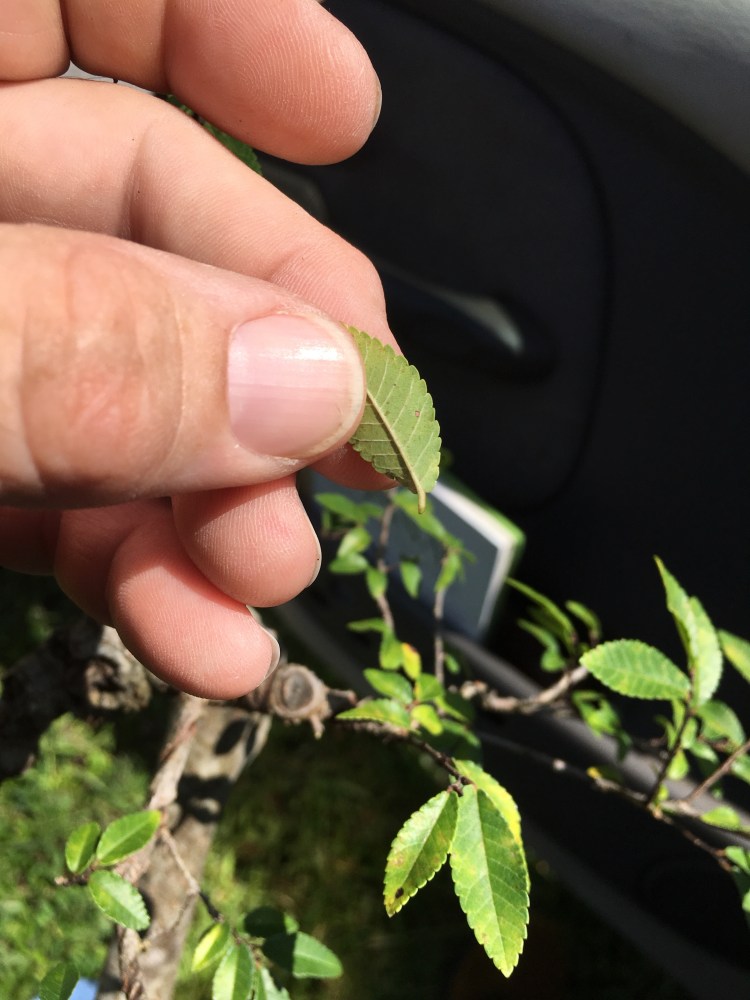
On an elm, you can defoliate by cutting off the leaves so that the new bud isn’t damaged (which is what we want) but you can also pull the leaf forward and pluck it off without damaging said bud.

As I defoliate and prune, this activates the hormones and starts the tree growing (contrary to what some people teach about energy, it is the hormones that make a tree grow. It’s true that a tree uses energy to grow, but it’s the hormones that make it grow and in which way. That whole “balance the energy” trope should read “balance the hormones”).
Naked tree. Close your eyes! 
The branch I cut for taper, cleaned up a bit.  I left the growth tip intact, so it elongates and thickens faster.
I left the growth tip intact, so it elongates and thickens faster.
Aha! I just learned that the steering wheel is a perfect pot holder! 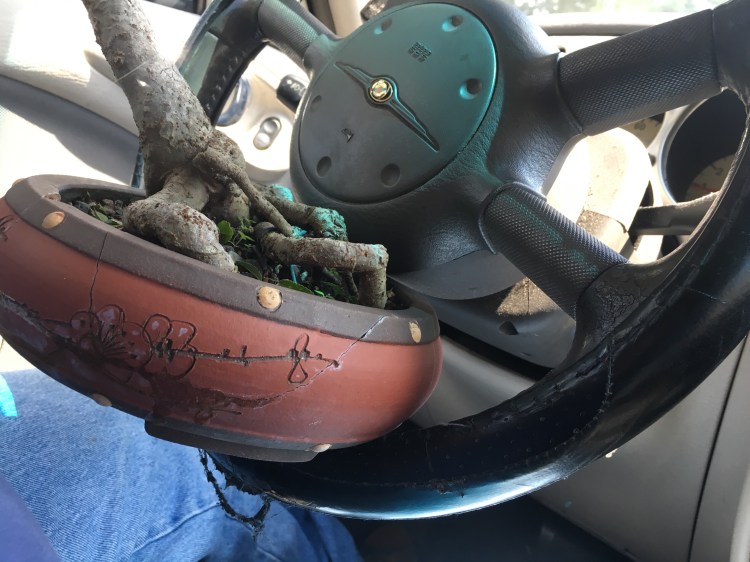
No hands!
 when I first started posting bonsai pics, I happened to put up one where I was bending a branch, seemingly with just one hand. I wasn’t really, it was just a pic and one hand was holding the camera, but a curmudgeon of a man decided to attack me in public, telling me I had the responsibility, to show only proper technique when it came to bonsai instruction.
when I first started posting bonsai pics, I happened to put up one where I was bending a branch, seemingly with just one hand. I wasn’t really, it was just a pic and one hand was holding the camera, but a curmudgeon of a man decided to attack me in public, telling me I had the responsibility, to show only proper technique when it came to bonsai instruction.
After laughing and explaining to him that, yes, if you read the caption, it says to do it the correct way. Anyway, always wire and bend with two hands.

As I did on this tree.
As I pointed out earlier, this is an ugly tree.
It even has a cheap, and a Chinese, and a cracked, pot. Pathos for all that’s good for bonsai………hah!

To clarify what I am doing, in case you couldn’t figure out by my obtuse explanation (I do tend to ramble. And wander, and tangentially bounce around), I am going to treat this deciduous (mostly) Chinese elm as though it’s not. I’m going to push the tree and see what happens. It’ll either revolutionize the growing and development of Chinese elms or I’m going to kill the tree. To also clarify, this is not an experiment, as experiments should be characterized as such.
To also clarify, this is not an experiment, as experiments should be characterized as such.
Experiments have controls, rigidity, data collection. Those things are beyond me. I’m a bonsai artist.
This is a case study using my horticultural prowess, my moxie, my years of experience, my green thumb. The only scientific thing going on here is my hypothesis (which is the word most people mean when they say theory, btw):
“I think this elm will act like a tropical tree”.
I actually think it has a higher chance of dying, but we will see next spring and especially in the summer. But first, this will be the Winter of our Discontent.
And, to quote that famous song (sorry about the inevitable earworm)
“….Mother
tell your baby children,
yea yea
Don’t do the things that
I’ve done….”
Interestingly, the elm has responded to the initial pruning in only about a week’s time, since the work was done. 
Do not be too excited my friends, I knew this would happen.
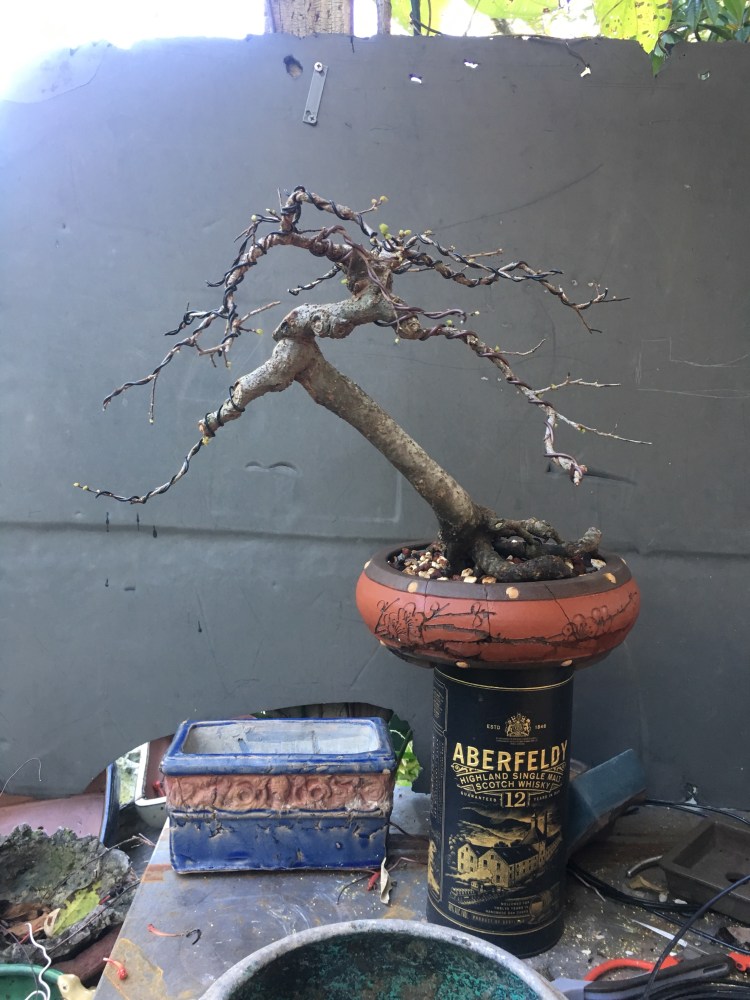
I’ll update as the tree progresses. Please send hate mail to the appropriate email address. And don’t speak too unkindly of me behind my back. I’m sensitive that way.
Very good comprehensive guidelines for Chinese elms. I just had a little difficulty differentiating the trunk from the shift knob/shaft in some of the photos.
LikeLiked by 1 person
Adam, I thank you, for being yourself. It’s been just a year since knowing you from this blog, and I’ll say it has been the most educational, entertaining, and most importantly open minding experience of my amateurish bonsai life! The way you describe the trees’ morphology, and physiology (“form&function”!), and melding it with art’s perspectives (particularly yours!!!) has been enlighting. Now, enough with this nonsense…when will you come to Puerto Rico and give us a demo, lecture or just visit!!!! Would love to see what you can do with Delonix regia (“Flamboyán”). Thanks again, and “keep walking”!
LikeLike
Reblogged this on Wolf's Birding and Bonsai Blog.
LikeLike
Hi Adam,
I’m an amateur as well and only recently joined your blog; I enjoy it thoroughly and always look forward to the next post. Please forget those who love the blood and concentrate on those of us who love the trees 🙂 … keep up the good work! Like Juan above I ask, when will come to Puerto Rico?
LikeLike
Please Adam, in order to avoid critics, don’t forget to remember to wire and bend with two hands and…with engine off 😀
Btw, it’s interesting to see how the tree could respond to these operations. If the tree totally woke up in about one or two weeks, couldn’t it use October and November to save enough energy and go in dormancy in December?
LikeLike
It could. We will see what happens though, for good or ill
LikeLike
Great article Adam. I dig elms such as this out of the ditches in the area. Many of them have been mowed repeatedly by farmers. I guess that their root systems are older but the above ground portions have to regrow every season. My point is that some of the ones I have possess funky trunks.
LikeLike